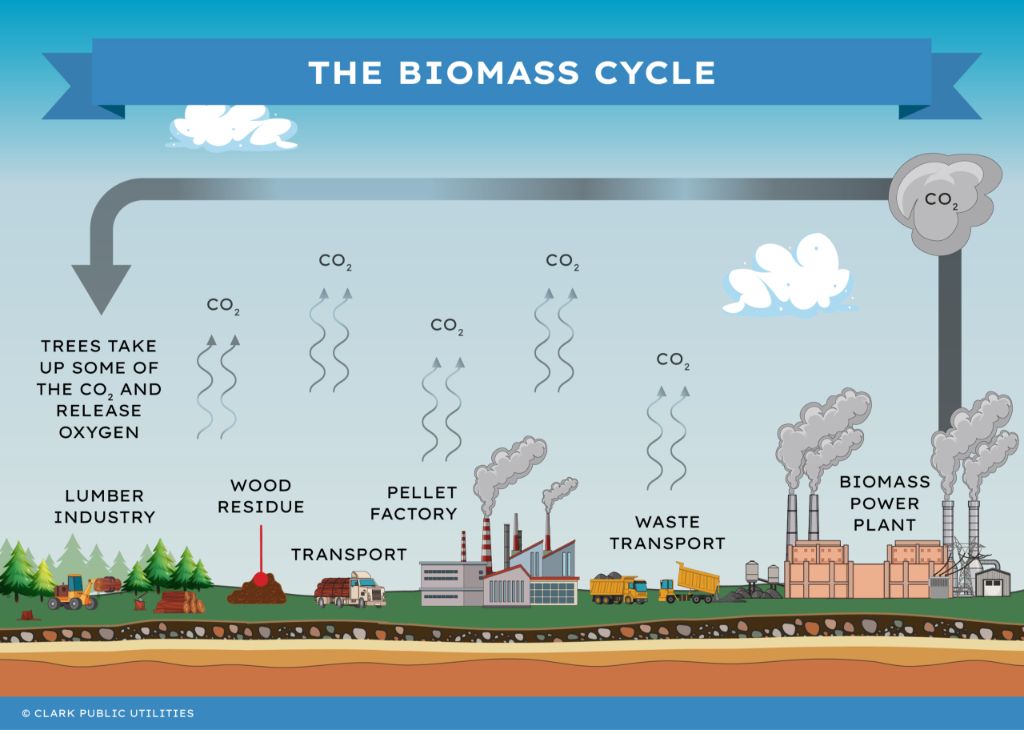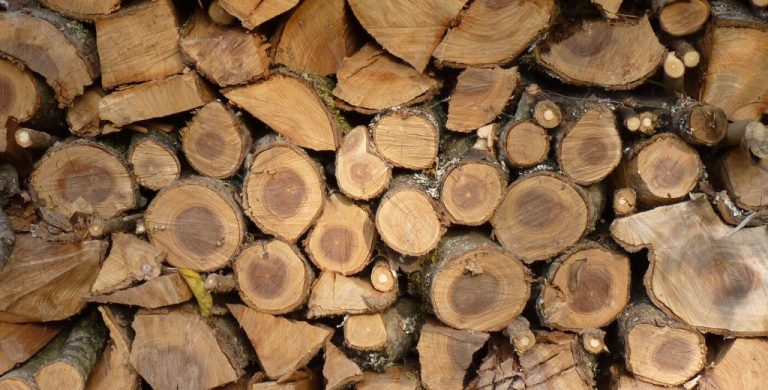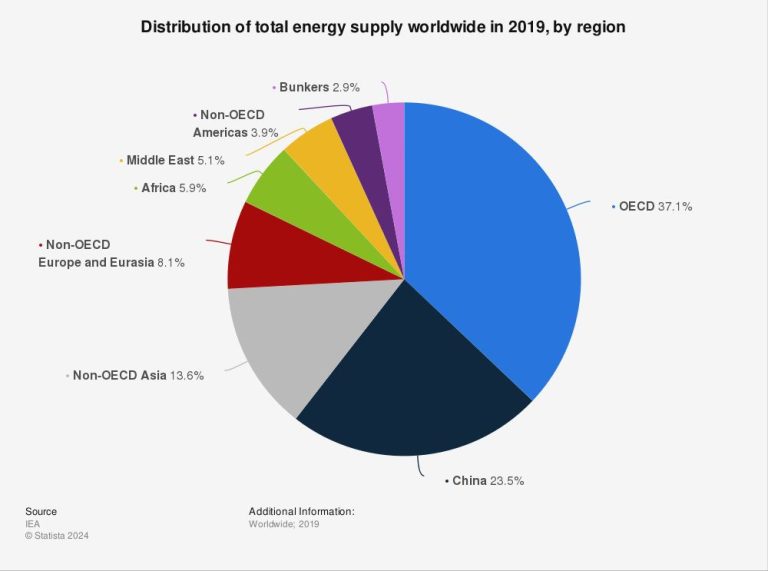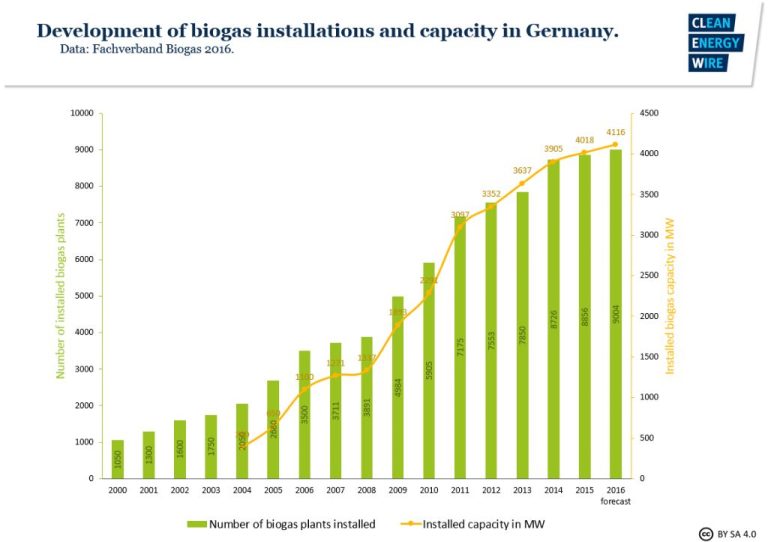How Do You Use Biomass For Energy?
What is biomass?

Biomass is organic material that comes from plants and animals. It is a renewable energy source because the energy it contains comes from the sun. Through the process of photosynthesis, plants absorb energy from the sun. When the plants are burned, the chemical energy in their tissues is released as heat (1).
The most common types of biomass used for energy today are:
- Wood and wood waste – from forests, yard clippings, wood pallets, etc.
- Agricultural crops and waste – corn, soybeans, corn stalks, nut shells, etc.
- Food, yard, and wood waste in garbage – municipal solid waste.
- Animal manure and human sewage – organic waste.
Biomass contains stored chemical energy from the sun. When biomass is burned, the chemical energy is released as heat and can be used to generate electricity or provide heating (2). The use of biomass for energy production helps to offset fossil fuel use.
Sources:
(1) https://www.eia.gov/energyexplained/biomass/
(2) https://en.wikipedia.org/wiki/Biomass
Types of Biomass
Biomass refers to organic matter that comes from plants and animals. There are several types of biomass that can be used to generate energy (Sources: NEED, EIA):
- Wood – This includes wood scraps, sawdust, timber logging residues, and mill scrap.
- Plants – Energy crops like switchgrass and agricultural residues like corn stover (cobs, stalks) can be used.
- Algae – Algae can be grown and harvested specifically for energy production.
- Municipal waste – Waste materials like paper, cardboard, food scraps, grass clippings, leaves, wood, and leather products can be converted into biomass energy.
- Animal waste – Manure from cows, pigs, chickens, and other animals is used to produce methane gas which can generate electricity.
These types of biomass feedstocks can be processed into solid, liquid, and gaseous products to generate renewable electricity, transportation fuels, and heat.
How biomass is converted to energy
There are several processes that can convert biomass into useful energy forms like heat, electricity, and transportation fuels. The main conversion methods include:
Combustion
Combustion or burning is the most direct way to convert biomass into heat energy. Biomass materials like wood chips, agricultural residues, and municipal solid waste contain stored chemical energy from photosynthesis. When burned, this chemical energy is released as heat that can be used for heating buildings, generating electricity, or other applications.
Gasification
Gasification converts biomass into a gas mixture called syngas or producer gas through partial oxidation at high temperatures. The resulting gas is cleaned and filtered to remove impurities and can be used to generate electricity, heat, or transportation fuels like diesel and ethanol.1
Pyrolysis
Pyrolysis uses heat in the absence of oxygen to thermally decompose biomass into bio-oil, syngas, and biochar. Slow pyrolysis maximizes biochar while fast pyrolysis yields 60-75% bio-oil.2 The liquid bio-oil can be refined into transportation fuels or used for heat and power generation.
Anaerobic Digestion
Anaerobic digestion uses microorganisms to break down biomass in an oxygen-free environment. This produces biogas containing methane and carbon dioxide which can be used for heating, electricity generation, and transportation fuel.
Using biomass for electricity
Biomass can be used to generate electricity through direct firing, co-firing with coal, and dedicated biomass power plants. With direct firing, biomass is burned to produce high-pressure steam that spins a turbine and generates electricity. According to the U.S. Department of Energy, most electricity from biomass is produced this way https://www.energy.gov/eere/bioenergy/biopower-basics. Co-firing involves adding biomass as a supplementary energy source with coal, which helps lower emissions from coal-fired plants. Dedicated biomass power plants use biomass as the main fuel source and feedstock. These plants generally have lower emissions than coal plants and can be carbon neutral when the biomass source is sustainable.
Using biomass for transportation
Biomass can be converted into liquid fuels that can power vehicles and equipment. The two most common types of biomass transportation fuels are biodiesel and ethanol.
Biodiesel is produced from oils or fats using a process called transesterification. Common sources of biodiesel include soybean oil, canola oil, and recycled cooking oil. Biodiesel can be blended with petroleum diesel or used on its own in diesel engines with little or no modifications [1]. It is biodegradable and nontoxic, and reduces emissions of carbon monoxide, particulates, and hydrocarbons compared to petroleum diesel.
Ethanol is produced from fermenting the sugars and starches found in biomass feedstocks like corn, sugarcane, or cellulosic materials. It is commonly blended with gasoline in ratios up to 85% ethanol and 15% gasoline (E85). Ethanol has a higher octane rating than gasoline and can improve engine performance. However, E85 vehicles require flex-fuel capable engines and fuel systems [2].
Biogas produced from anaerobic digestion of organic wastes like manure, sewage, and landfill waste can also be used as a transportation fuel. Biogas is mainly composed of methane and carbon dioxide, and can be purified into biomethane and compressed for use in natural gas vehicles.
Using Biomass for Heat
Biomass can be used to generate heat for residential and commercial buildings in several ways. One common method is through wood pellet stoves. Wood pellets are made of compressed sawdust and wood residues, formed into small pellets that can be burned efficiently for heat. Wood pellet stoves are self-contained heating appliances that burn pellets fed from an attached hopper (Biomass Heating System).
Compared to wood logs, wood pellets have a higher energy density and uniform size and shape, allowing them to be fed into stoves at a controlled rate with limited emissions. Pellet stoves can heat spaces very efficiently and only require periodic emptying of the ash pan. However, manually carrying pellets and removing ash is labor-intensive. Pellet stoves have become a popular method of residential heating in many areas.
On a larger scale, biomass district heating systems use centralized boilers to provide heat for residential and commercial buildings in a region through a network of pipes distributing hot water or steam. District heating systems significantly improve efficiency compared to individual building boilers, and can be fueled by various forms of biomass. One example is the Burlington Electric Department district heating system in Vermont, which provides heat for 50% of the city using wood chips as the primary fuel source (Biomass heating system).
Environmental impact
Biomass is often considered a carbon neutral energy source. This is because the carbon dioxide released when biomass is burned is balanced by the carbon dioxide absorbed when plants grow. However, some studies show that burning biomass may initially release more carbon dioxide than fossil fuels. This is offset over time as new plants grow and absorb carbon dioxide (1).
Biomass combustion can contribute to air pollution by releasing carbon monoxide, volatile organic compounds, particulate matter and other pollutants. Modern biomass facilities include emissions controls to limit air pollution. Overall, burning biomass produces air emissions at a rate comparable to natural gas but higher than nuclear, hydroelectric, wind or solar power generation (2).
Large-scale biomass energy production requires significant land to grow energy crops. This could compete with land used for food production or lead to habitat loss. However, biomass projects are often located on marginal lands unsuitable for other uses. Perennial grasses and crop residues generate biomass without displacing food crops (1).
(1) https://www.eia.gov/energyexplained/biomass/biomass-and-the-environment.php
(2) https://www.nrel.gov/research/re-biomass.html
Economics
The economics of biomass energy are complex. While biomass feedstocks may be cheaper than fossil fuels, the capital costs of building a new biomass power plant are high compared to conventional power plants (NREL). However, biomass power plants can provide cost savings in the long run. According to the NDSU, the cost of producing biomass energy ranges from $25-50 per dry ton, compared to $2-3 per million BTU for natural gas and $1-2 per million BTU for coal (NDSU).
The cost of biomass can be offset by government incentives. In the U.S., biomass plants are eligible for federal tax credits, cash grants, loan guarantees, and preferential utility rates. The federal Renewable Electricity Production Tax Credit (PTC) provides biomass plants with a tax credit of $0.015 per kWh generated (DSIRE). The PTC helps make biomass energy economically competitive with heavily-subsidized fossil fuels.
Overall, while biomass energy has high upfront costs, it can provide long-term savings compared to volatile fossil fuels. Government incentives help make biomass economical in the near-term as the industry matures.
Challenges
While biomass has many benefits as an energy source, it also faces some key challenges. Three major challenges are high costs, low energy density, and land competition.
First, biomass energy requires excessive investment and has high operating costs compared to other renewable sources like solar or wind. Facilities need complex equipment and infrastructure to handle, process, and convert biomass into usable energy. This makes startup and maintenance costs quite high.
Second, biomass has a low energy density compared to fossil fuels, meaning more raw material is needed to produce the same amount of energy. This increases handling, storage, and transportation costs. It also means more land is required to grow the biomass feedstock.
Third, biomass feedstocks compete for land use with food crops or lumber. As demand for biomass energy increases, so does the demand for arable land. This can potentially raise food prices as less land is available for agriculture. There are also concerns that biomass production may not be sustainable long-term if it diverts too much land from food production or carbon-sequestering forests.
To overcome these challenges, continued research into improving efficiency and reducing costs will be key. Policy incentives can also help make biomass energy more viable and sustainable.
Future outlook
Biomass is expected to continue playing an important role in renewable energy production in the future. With further research and technology improvements, biomass could become an even more efficient and sustainable energy source.
According to an article on GreenBiz (https://www.greenbiz.com/article/future-biomass-today-tomorrow-and-beyond), key areas of research for improving biomass include developing better feedstocks, improving conversion processes, and finding new high-value end products. This could increase efficiency and reduce emissions from biomass energy production.
New technologies like torrefaction, which roasts biomass to improve its properties, and new techniques to genetically engineer biomass crops hold promise for increasing energy yields from biomass. Improved logistics and infrastructure will also make large-scale biomass energy more viable according to an article from NC State University (https://cnr.ncsu.edu/news/2021/01/biomass-sustainable-energy-future/).
Most projections expect biomass to play an expanding role as part of renewable energy mixes. Its ability to provide renewable electricity, transportation fuels, and heat while supporting grid stability with baseload power make it a valuable part of a low carbon future.






